August 13,
2015
Wow, what an
amazing four days we’ve had in the Pantanal! After teasing out species after
species in mindboggling diversity at Cristalino, here our minds have been
boggled by shear numbers, size, and beauty of the wildlife.
After a day
of driving and birding at Pouso Alegre and roadsides, we set out early on our second
morning on the Cuiabá River for two full days of searching for jaguar. Of
course there’s lots of other things to see, and maybe the distraction of all
kept us from seeing a jaguar that morning.
A Black
Skimmer of the locally resident subspecies intercedens
is preparing to breed on the recently exposed sand banks. The first rains won’t
start for another month, and water levels won’t rise for another 2 or 3, so
there’s plenty of time to rear a family.
Black-capped
Donacobius, the sole member of the family Donacobiidae, is a common sight in
the riverside vegetation. The vocal sacs on the side of the throat are more
like a Sooty Grouse than any other passerine.
We saw
several Black-collared Hawks, but only this one, intent on its armored catfish,
let us approach so closely.
Cocoi Heron
is the Great Blue replacement species here.
This is a
juvenile Great Black Hawk.
Large-billed
Terns breed alongside the skimmer, Yellow-billed Terns, Collared Plovers, and
Pied Lapwings.
Monk
Parakeets build nests independent of nest cavities, unique in this regard among
the world’s parrots.
The strange Southern
Screamer, distantly related to ducks and geese.
Wattled
Jacana is surprisingly not a very common bird along the Cuiabá River. Maybe too
many of them get eaten by caiman.
Yellow-billed
Cardinal is everpresent in the riverside vegetation.
The biomass
of Yacare Caiman, Caiman yacare (misleadingly
called Paraguayan Caiman on some lists), is impossible to overestimate.
Here are
some Yacare Caiman babies, guarded by the mother, barely visibile in the water.
Marsh Deer
aren’t rare, but we never see very many.
There are
two species of water-hyacinth here. The bigger one is the native Eichhornia azurea, Anchored
Water-hyacinth, and where it is native, it is not invasive. Annual flooding
cycles, as well as multitudes of symbionts keep it in check.
Inhabiting
the water-hyacinths was this gorgeous dragonfly, Diastatops intensa.
For some
reason, this Erythemis peruviana,
Flame-tailed Pondhawk, decided to land on someone’s wrist.
On our first
afternoon boating, we got word of a jaguar sighting, and we went racing the
direction of the other boats. The first thing we saw was this.
Then this:
Then this:
We later
learned from Joe and Robbie’s friend Paul Donahue that this particular jaguar
has been dubbed Ruth.
The 120+
people in 20 boats was part of the spectacle, as we watched the jaguar patrol the
river bank for 30 minutes. Clearly there is no dress code here.
Later the
next morning we joined another crowd to view yet a different jaguar.
Finally,
later that same morning our boatman spotted what Joe called “our own private Jaguar.” We watched it for a
couple minutes before she got up and disappeared into the dense riverside
vegetation.
Here’s a
very happy jaguar watcher.
We spent a
good amount of time in drier habitats along roadsides in the Pantanal as well.
The tree Vochysia divergens, known
locally as Cambara,́ was in full bloom. It’s apparently an invasive plant here
though native to areas of Brazil not far away; it’s not clear to me what kept
it from being native in this part of Brazil until only recently.
Here is a
closeup of the flowers. A member of the tropical family Vochysiaceae, it’s
quite unlike anything we have in North America.
The rather
obscure Fuscous Flycatcher reminds one a bit of our Empidonax.
Jabiru is a
huge stork, and birds on nests are an iconic sight in the Pantanal.
Campo
Flicker is a much more coloful relative of our Northern Flicker.
Cattle
Tyrants follow cattle, but also associate with the Capybaras and other animals,
picking off ectoparasites and insects flushed by them as they forage.
Long-tailed
Ground Dove is rather local in the drier scub in areas of slightly higher
elevation.
Peach-fronted
Parakeet is common, but to see one snacking on the sweet nectar of Tabebuia flowers is not a daily sight.
The Red-crested
Cardinal is rather shaped like our Northern Cardinal, but is unrelated and a
member of the tanager family.
Rufous
Casiornis, a tyrant flycatcher, is also only in the drier woodlands.
On our last
evening, a guide for another group went out of his way to run back to the
restaurant to inform us of this Giant Anteater at the far end of the buildings
at our lodge, Pouso Alegre.


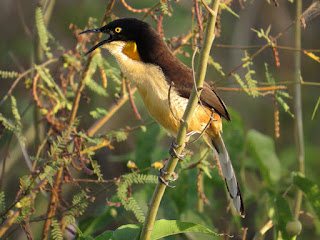
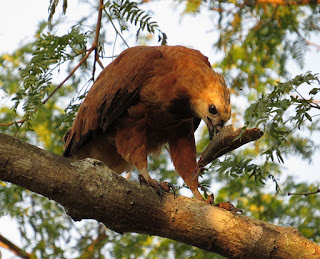



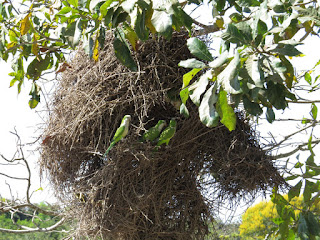
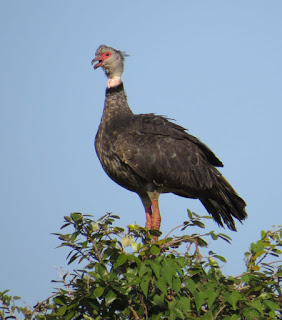
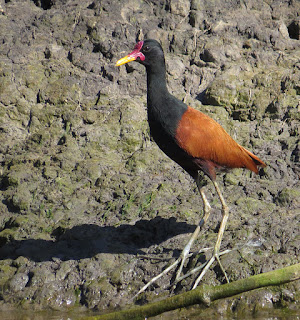
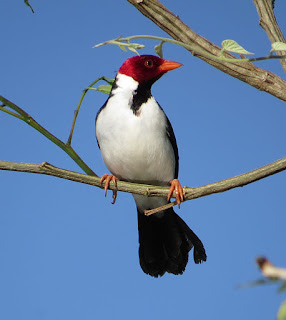





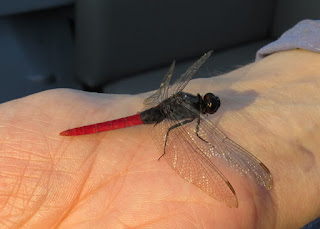





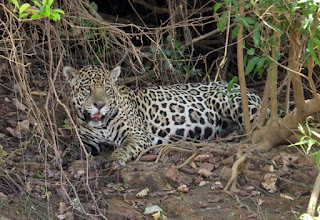




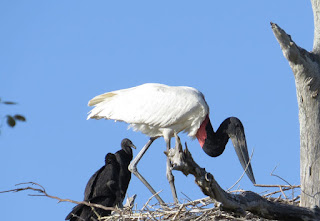
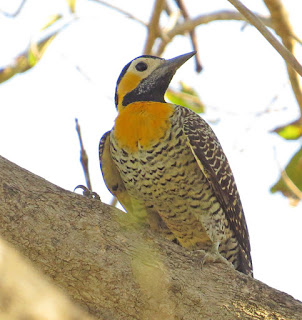


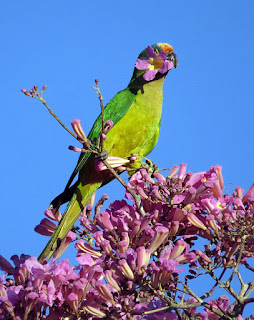
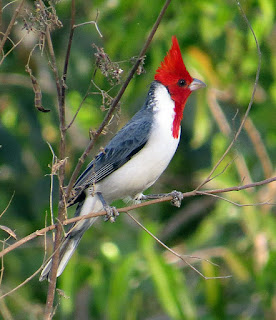







No comments:
Post a Comment